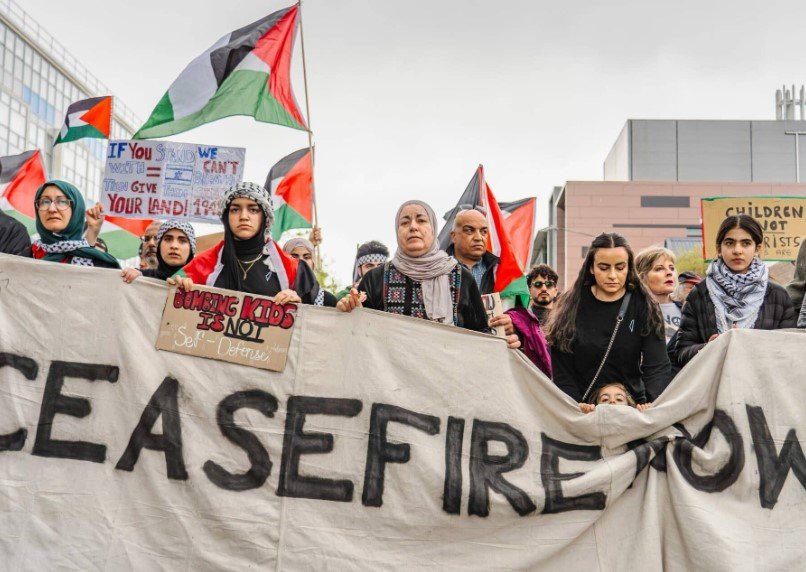Iran’s top leadership says the clock is ticking for American forces in the region, signaling a dangerous turn in an already spiraling crisis after US airstrikes hit Tehran’s nuclear infrastructure.
Ali Akbar Velayati, senior advisor to Supreme Leader Ayatollah Ali Khamenei, issued a chilling warning late Sunday: any base used by the US to hit Iran would now be seen as a “legitimate target.” His comments followed a night of missile-laced fury that saw America hammer Iran’s key atomic sites with airpower not seen since the Gulf War.
The message is clear—Tehran’s patience has run dry, and Washington may have just lit a fuse that burns far beyond Iranian borders.
A New Frontline May Be Forming Across the Middle East
American B-2 bombers, stealth jets, and Tomahawk missiles battered Iran’s Fordo, Natanz, and Isfahan nuclear facilities over the weekend, a bold response to what the US claims were “imminent threats” from Tehran.
According to Pentagon sources, 14 bunker-busters and dozens of cruise missiles were launched from carriers in the Persian Gulf and bases in the UAE and Qatar. The scale of the operation stunned analysts.
Then came the statement from Tehran. Or rather, the warning.
Velayati’s words were no slip. He said: “Any country that assists US strikes—whether by airspace, intel, or physical deployment—should prepare for a direct response.” The Iranian Armed Forces, he added, will pick the “time, place, and level” of that response.

US Bases Now on High Alert, Civilians Told to Flee
The fallout from the strikes wasn’t just political—it was immediate and global. By Sunday evening, the US State Department issued a rare “worldwide caution,” advising all American citizens overseas to exercise “increased vigilance” due to possible attacks.
This wasn’t a drill. Non-essential US personnel were ordered out of Lebanon, while embassies across the region went into lockdown mode. Air travel across much of the Middle East was either suspended or rerouted.
One sentence in the alert stood out: “Any facility associated with American presence abroad may be subject to attack.”
A US CENTCOM official confirmed increased deployments to bases in Bahrain, Iraq, and Jordan. “We are fortifying critical installations and readying interceptor systems,” he said, asking not to be named due to the sensitivity.
Iran’s Losses Are Staggering, but Its Response Remains Deliberate
In human terms, the cost is already steep.
The Iranian human rights group Emtedad told the Associated Press that 950 people had died and another 3,450 were injured since Israeli strikes began on June 13. Add to that the loss of underground nuclear sites, and Tehran now sees itself under siege.
Yet Iran isn’t rushing to retaliate blindly.
Here’s what Tehran is doing instead:
-
Increasing defensive deployments along the Strait of Hormuz
-
Mobilizing IRGC units in Syria, Iraq, and Lebanon
-
Quietly moving drones to Yemen’s Houthi-controlled areas
One Iranian official told Fars News, “This is not a time for loud retaliation. It is a time for strategic consequences.”
American Officials Claim “Bomb Pulled from Their Hands”
President Donald Trump, in typical style, took to social media late Saturday, bragging that his decision had “completely obliterated” Iran’s bomb-making capabilities. “We had a spectacular military success yesterday,” he wrote, “taking the ‘bomb’ right out of their hands (and they would use it if they could!).”
The comment, unsurprisingly, lit a fire under Tehran’s leadership.
Iran’s Foreign Ministry quickly issued a formal protest at the UN, accusing the US of committing “acts of war.” The country’s ambassador to the UN, Amir Saeed Iravani, warned of a response that would “reshape the military balance in the Middle East.”
Israel’s Role Still the Wildcard
It was Israel, not the US, that launched the first strikes earlier this month—targeting suspected IRGC weapons hubs and a research facility near Qom. And while the US operation was separate, Iran sees them as linked.
Israeli Prime Minister Benjamin Netanyahu has been unusually quiet since the American attack. But Israeli defense officials are now warning residents near the northern border to prepare for possible Hezbollah strikes.
Iran’s linkage of Israel and the US is no coincidence. Many in Tehran view them as two heads of the same beast.
What This Means for US Troops Stationed Abroad
As of early June 2025, here’s a breakdown of US troop presence across bases in proximity to Iran:
| Country | Estimated US Troops | Primary Use |
|---|---|---|
| Iraq | 2,500 | Counter-ISIS, support operations |
| Bahrain | 7,000+ | Fifth Fleet Naval HQ |
| Qatar | 8,500 | Al Udeid Air Base |
| UAE | 3,500 | Forward-deployed air operations |
| Jordan | 2,000 | Training and surveillance hub |
| Kuwait | 13,500 | Logistics, command & control |
This paints a risky picture. With bases sprinkled across the Gulf and Levant, the US has a lot of skin in the game—and a lot to lose if even one of them becomes the focus of Iran’s retaliation.
The World Watches, and Waits
While Americans and Iranians trade warnings, other countries are trying to keep the fire from spreading.
Turkey urged both sides to show restraint, while India expressed concern over energy security. China, meanwhile, pushed for an emergency UN Security Council meeting.
Back in Tehran, streets were filled with protestors holding portraits of Khamenei. There’s anger, grief, and resolve. And one emotion that’s thick in the air: revenge.
But revenge doesn’t always come fast. Sometimes it waits.
